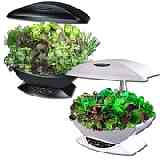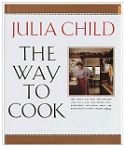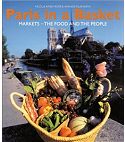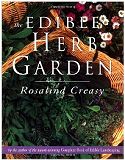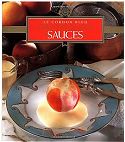|
|
French
Chocolat FR Cuisine Phrases French Cookbooks |
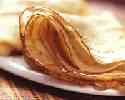 |
Cooking
Basics Cooking Conversions Great French Chefs |
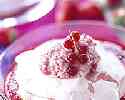 |
Questions Regarding
COOKING VACATIONS Call: |
| Home | Flight | Transfer | Train Pass | Hotel | All Cruises | EN-FR Words | River Cruise | Med Cruise | Paris Inclusive | Group | TourPackage | Travel Books | Travel Needs |
| The Kitchen Pantry | ||||
|
Home
|
Cooking
Basics |
Culinary Terms |
French Food
|
Herbs |
Recipes |
Pantry |
Essentials |
Cooking Tips Cuisine Basics | Gourmet Trips | Cheese | Cooking Conversions | Clarified Butter Sauces | Butter Compounds French Crèmes | Classic Stocks | Vegetable Preparation | Meats - different types | Cooking Methods and more |
||||
|
The 'Kitchen Pantry'
is every bit as important as kitchen
essential needs, and an important part of the overall kitchen set-up.
In this section you'll find the basic necessities needed for setting-up your
kitchen pantry, the staples to keep on hand, and information about those categories. These are the
basic and necessary items to start with --
additional items may be added to the kitchen pantry as needed. Dry Baking Ingredients 1. Flour types are: all purpose, self-rising, wheat, rye and specialty flours 2. Sugar types: cane or beet [all have the same basic properties] 3. Cornstarch or Arrow Root are thickening agents [besides flour and roués] 4. Salt edible types: table salt [mined], sea salt [various sources] and kosher salt 5. Baking Powder and Baking Soda - both are rising agents and lighten the weight 7. Yeast kinds are active dry yeast granules, fresh yeast and instant yeast 8. Cocoa Powder for Baking [not the cocoa used as drink mixes]. |
||||
| Extracts and Flavorings The most used extract [or food flavoring] is vanilla. It is used in numerous food groups and in baking in particular. There is a big difference in the two however, where as the extracts are pure flavors, but the flavorings of these extracts are alcoholic chemical compositions with flavors to taste similar to the extracts. There are numerous other extracts and literally dozens of flavorings, some rather exotic, but for best results in cooking, always use the extracts, the taste will bear that out. 1. Vanilla Extract 2. Almond Extract 3. Maple Extract 4. Lemon or Orange Extract |
||||
Odd & End Canned and Dry Staples [non-refrigerated] Other widely used kitchen staples are vinegars, oils [particularly olive oil], sauces, canned goods as noted, breadcrumbs, nuts and dried fruits. 1. Olive oil is the best oil nutritionally, others to have on hand vegetable or peanut 2. Vinegars to have on hand - balsamic, apple cider and white wine [small bottles] 3. Sauces include a hot sauce, soy sauce and Worcestershire 4. Canned goods include tomatoes, different bean varieties, soups and pasta sauce 5. Dried fruits to include raisins, dried cranberries and mixed fruits 6. Nut varieties to keep on hand are almonds, pecans and walnuts 7. Coffee and/or tea if you drink them 8. Dry breakfast cereal and/or oatmeal 9. Pasta and Rice 10. Saltines or other cracker 11. Canned meats [for emergency] 12. Peanut Butter 13. Bouillon Cubes different flavors 14. Dried soup mixes |
||||
| Seasonings - Herbs - Spices Seasonings, herbs and spices are a necessity, and most important in cooking. This section is broken down by the following categories: Seasonings [always use fresh garlic, onion, Celery if you have it] 1. Salt & Pepper 2. Dried Chopped Garlic 3. Dried Onion Flakes 4. Dried Celery Seed 5. Dried Parmesan Cheese Herbs [always use fresh if possible, and triple the amount that a recipe calls for of a dried herb]. The basics essential herbs are listed here, and please note our section on 'Cooking with Fresh Herbs', with information on the most used herbs, and how to use them in cooking, to grow them and more.
For more information on specific herbs and their uses:
Allspice | Cinnamon | Clove | Cumin | Ginger | Nutmeg | Pumpkin Pie Spice |
||||
|
Wrap It or Store It This section notes the basic wraps to use in cooking and storage. Aluminum Foil - always use heavy duty |
||||
|
The AeroGarden™ - Grow Herbs Indoors 365 Days a Year!
|
||||
| Great Cooking Tips, Food
Safety, Storage and Emergencies You'll find great cooking tips for everything here, as well as information regarding food safety in food handling and cooking the food, as well as the safe storage of foods. Unfortunately today we need to be prepared for emergency situations, and have basic supplies on hand, in case of weather emergencies or possible terrorists attacks. -How to Basic Cooking Methods -How to Be Prepared for an Emergency -How to Boil and/or Poach an Egg -How to Bone a Whole Chicken -How to Braise - What is Braising? -How to Butterfly a Leg of Lamb -How to Cook Beef Tenderloin -How to Cooking Measurements & Conversions -How to Cook Prime Rib - How to Cook With Fresh Herbs -How to De-bone Fish - How to Eat Lobster the Easy Way -How to Grill Perfectly for Beginners -How to Knead Dough - How to Know Fruit is Ripe -How to Know Your Salmon - there's a difference! -How to Methods of Cooking Pork - How to Peel Tomatoes - How to Produce Substitution -How to Repair a Sauce - How to Roast and Peel Sweet Peppers -How to Select Fresh Fish - How to Substitute Baking Ingredients -How to Substitute Cooking Liquids -How to Substitutes for Dairy Products - How to Technique for Folding in Ingredients - How to Thicken Sauces - How to Turkey Roasting Basics - How to Properly Use a Mandoline for Slicing -How to Work with Hot Peppers |
||||
| Tips for Cooking, Food Handling &
Storage - All About the Bean Family - All About Cookies & Packaging for Shipment - All About Flour & Choosing the Right Flour - All About Flour Basics - All About Gluten - All About Grains - All About Honey - All About Lamb & Seasoning It - All About Oils - All About Marinating - All About Pasta - All About Safe Food Handling - All About Salt Types & Uses - All About Spice Seeds - very good! - All About Sugar Types - All About Sweeteners - All About Vanilla - All About Vegetables - All About Whipped Cream - Avoid Overcooking Fish - Baking Tips - Cooking Strategies - Duck and Goose Preparation & Safe Handling - Egg Products Preparation & Safety - Egg Substitute - Foods That Don't Freeze Well - High Altitude Cooking - How to Prepare Artichokes - How to take care of your Cutlery - Meat & farm raised game, preparation & food safety - Poultry Preparation and food safety - Safeguarding Food - Secrets to Making Better Cookies - Stir-Fry Tips - Time Saving Cooking Tips |
|
|||||||||||||||
|
|
|||||||||||||||
|
© Copyright 1999 - 2016 by Sharon Atchley. All rights reserved. Updated: 05/19/2016 |

